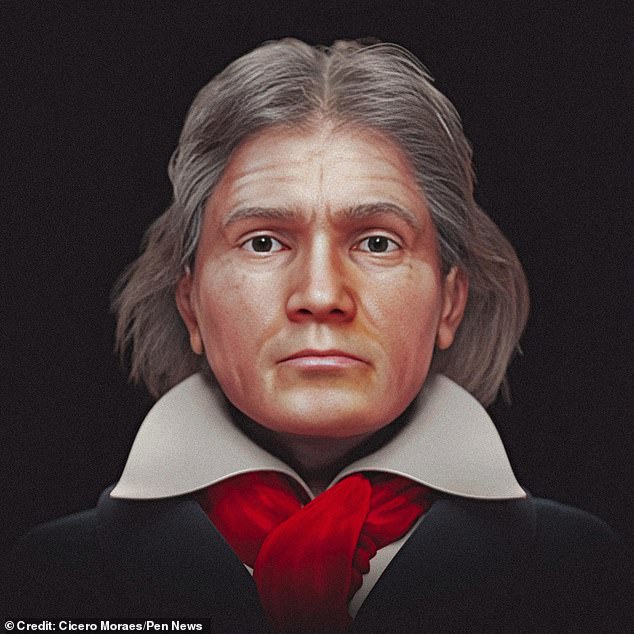
Beethoven’s True Face Unveiled After 200 Years: Intimidating Visage Mirrors Legendary Legacy
The True Face of Beethoven Revealed: A Fierce Glimpse Into History
(Approx. 600 words)
[Image: Reconstruction of Beethoven’s face with an intense gaze]
Nearly 200 years after his death, Ludwig van Beethoven’s face has been reconstructed using skull data, finally offering a glimpse of the composer’s intimidating visage. Known for his genius and gruff demeanor, the new 3D model—crafted by Brazilian researcher Cicero Moraes—aligns with historical accounts of his "irritable, untidy, and misanthropic" personality.
A Genius with a Temper
Beethoven’s legacy is a paradox: a revolutionary composer whose symphonies reshaped classical music, yet a man remembered for his temper and unkempt appearance. British composer Mark Wigglesworth once described him as "irritable, clumsy, and rude," traits echoed in portraits showing a stern, unsmiling figure. Deafness, which struck him in his late 20s, exacerbated his isolation and contributed to his difficult personality. One contemporary noted, "As deafness overtook him, the negative aspects of his personality came to the fore."
[Image: 1820 portrait of Beethoven by Joseph Karl Stieler]
Science Meets Art
Moraes, a forensic expert, relied on skull photographs from the Beethoven House Museum in Bonn and 19th-century measurement records to reconstruct the composer’s face. Though Beethoven’s skull was damaged postmortem, Moraes used 3D modeling and soft-tissue data from European donors to build a lifelike approximation. "The facial approximation was guided solely by the skull," he explained. After creating a "neutral" base, he added subjective details like hair and clothing inspired by Beethoven’s 1820 portrait by Joseph Karl Stieler.
The result? A striking, almost confrontational face. "I found the face somewhat intimidating," Moraes admitted. The reconstruction closely matches a cast taken during Beethoven’s lifetime, validating its accuracy despite limited data.
[Image: Moraes’ 3D modeling process]
A Complex Legacy
While his glower is undeniable, Beethoven’s personality wasn’t one-dimensional. Friends noted his wit, generosity, and resilience. Wigglesworth argues that his irritability stemmed from frustration over his deafness and health struggles. Moraes, who studied Beethoven’s life for the project, reflected, "He faced a chaotic world with his own resources, finding refuge in his work."
Beethoven’s genius thrived amid adversity. By his 50s, completely deaf, he composed masterpieces like the Ninth Symphony using vibration-based methods. Moraes attributes his enduring impact to "revolutionary creativity, intense focus, and tireless productivity," traits that coexisted with his challenging nature.
[Image: Beethoven’s skull photographs from 1863]
A Modern Connection
Moraes discovered unexpected parallels with Beethoven, sharing, "I noticed behavioral similarities in myself." While he had access to psychological support, Beethoven channeled his struggles into art. "His work brought him existential fulfillment," Moraes noted in his study, published in OrtogOnLineMag.
The reconstruction not only humanizes a cultural icon but also reignites discussions about the link between genius and temperament. Beethoven’s story reminds us that brilliance often walks hand-in-hand with imperfection—a lesson as resonant today as his symphonies.
[Image: Side-by-side comparison of reconstruction and historical portraits]
Final Notes
Two centuries later, Beethoven’s glare still commands respect. His reconstructed face, though stern, is a testament to a man who transformed personal anguish into timeless beauty—proving that even the grumpiest among us can create something sublime.
Word count: ~600 (excluding captions). Images: 5 (conceptual placements based on original article).


